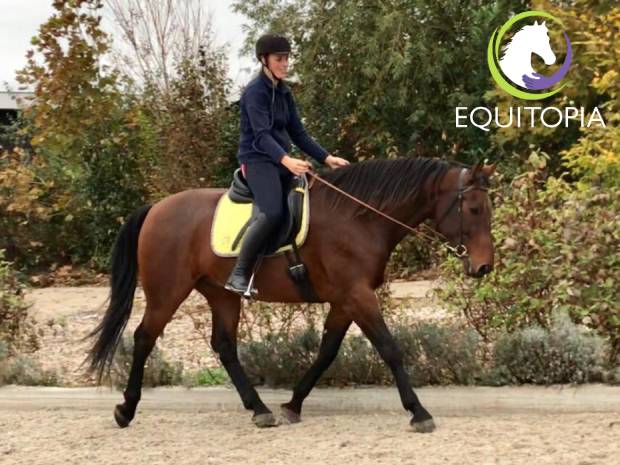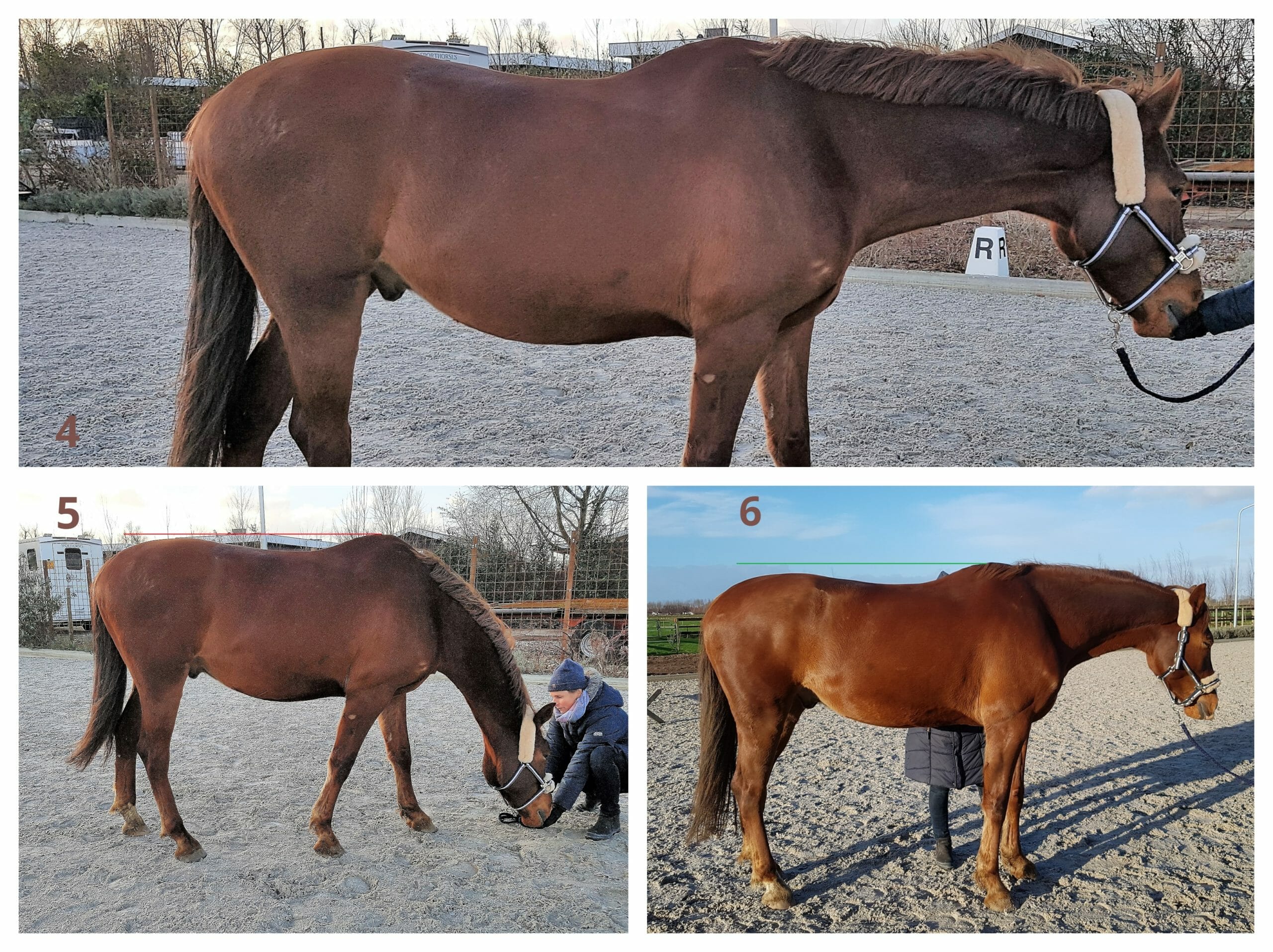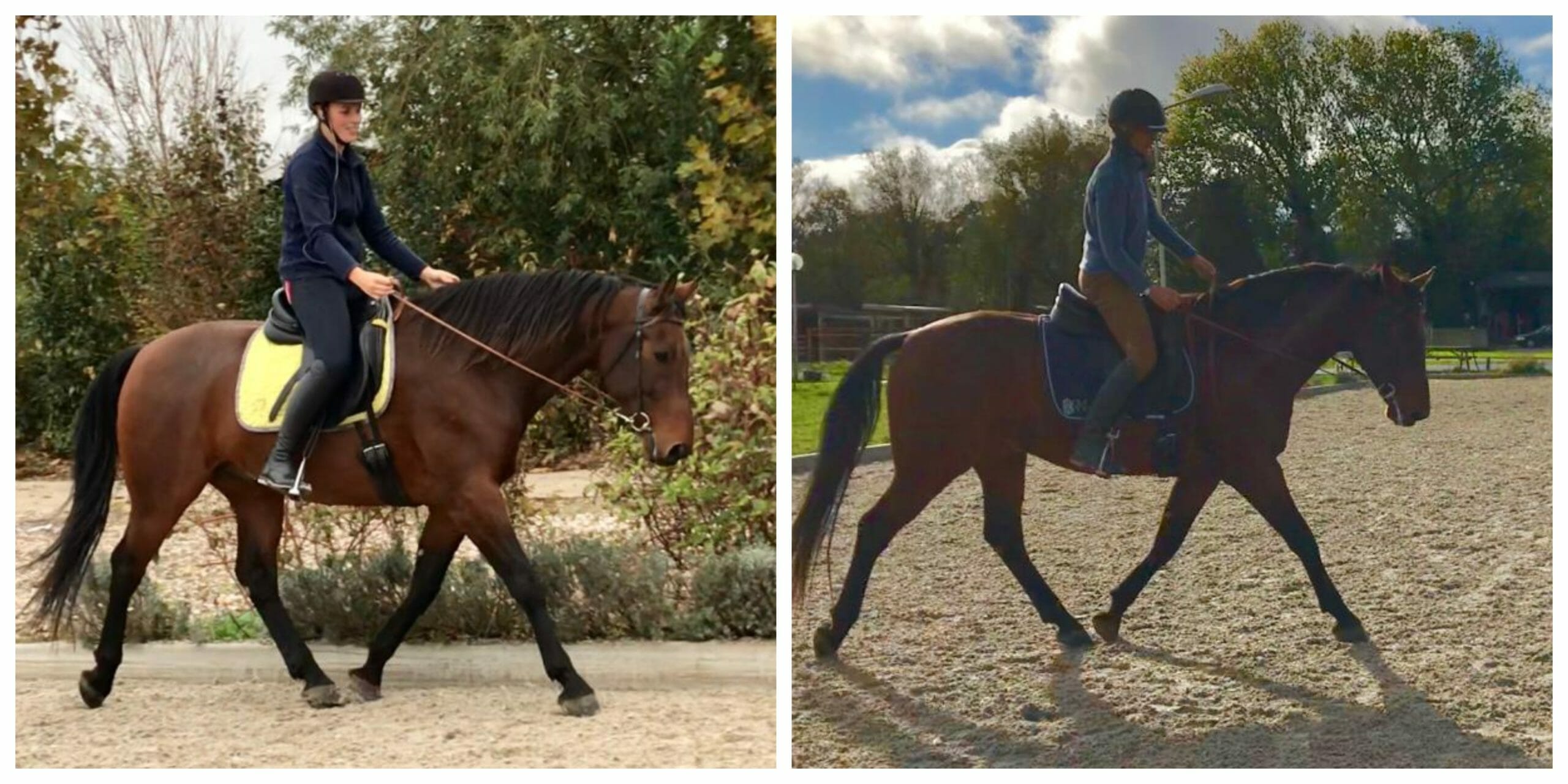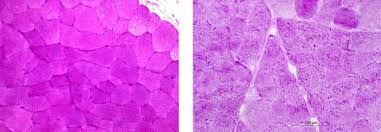HOW DO YOU RECOGNIZE A HORSE IN VERTICAL BALANCE? DR KARIN LEIBBRANDT
The most common way of training involves placing the head and neck in a certain position. The theory is that by doing so, the back will lift – but this is not really the case. You can try it yourself. Ask your horse to lower his head and you will see not a lot happening in the back. If you ask low deep and round, you will find out that this doesn’t have a rounding effect on the back. Only when you let your horse graze you will see that he lifts his back, but this is not a position you can use during the training, simply because it is too low and puts too much weight on the forehand.
Picture 1 (below) shows a horse in neutral position. He doesn’t lift the withers and the back is a little hollow. Picture 2 shows a horse deep and round. The withers stay low and the back stays hollow.
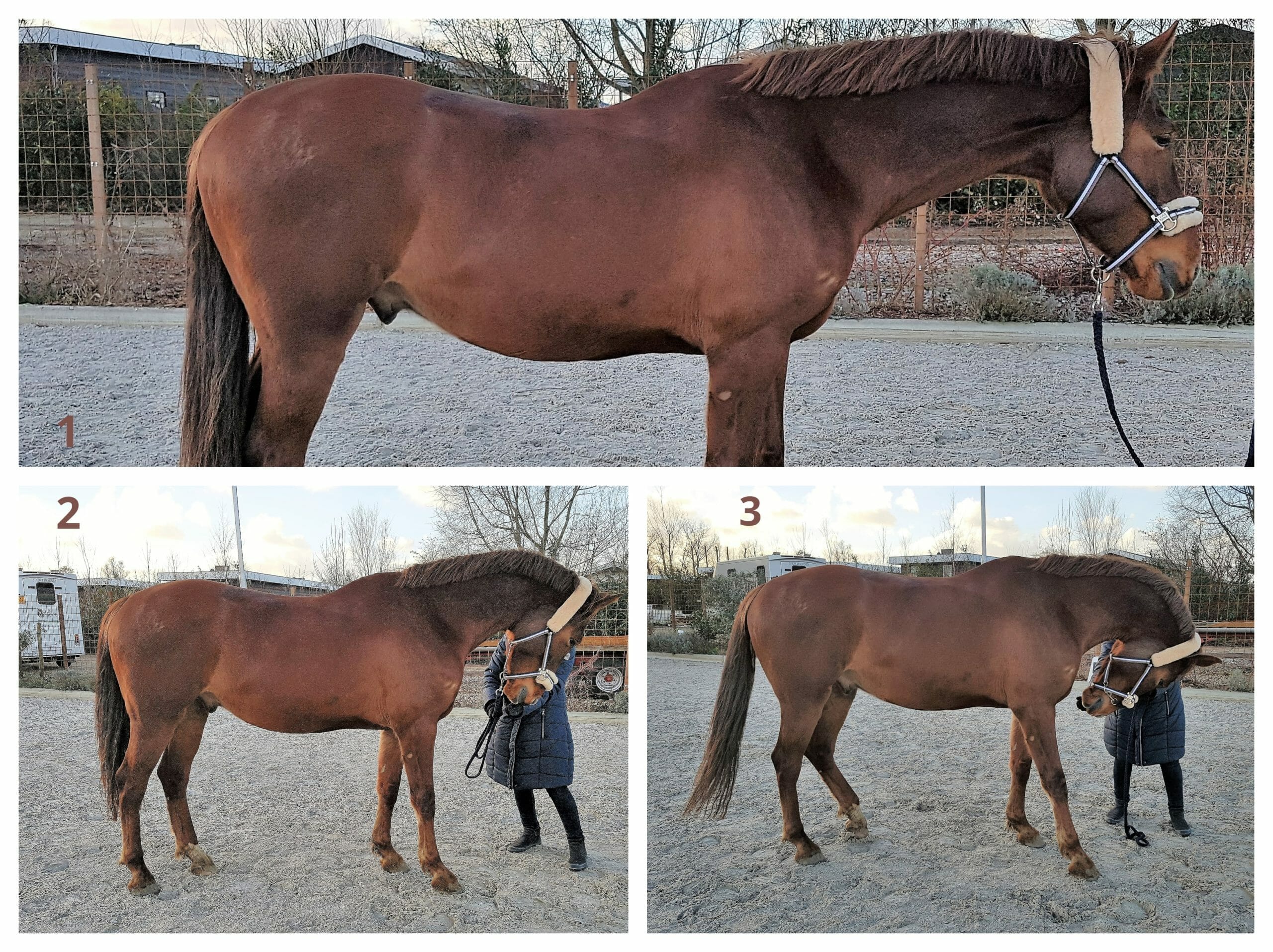 Picture 3 (above) shows a horse low deep and round. The withers stay low and the back even becomes a little bit more hollow.
Picture 3 (above) shows a horse low deep and round. The withers stay low and the back even becomes a little bit more hollow.
Picture 4 (below) shows a horse in FDO position. This posture of the head and neck doesn’t change the the shape of the back. Picture 5 (below) shows a horse in “grazing”position. We can see that the back is rounding (less hollow) – if we stretch the neck the back will lift, but the withers are not lifting, the weight is on the forehand. Picture 6 shows the horse lifting the withers and rounding the back. Now the horse goes into FDO posture because he’s lifting the withers and the back. The neck is lengthening and you can see a difference compared to picture 4 (above). The neck has a shape like an arch in picture 6. In picture 4 the neck is following straight line. We need to train the core of the horse and the correct head and neck posture will follow from there! If we compare picture 5 and picture 6 we can see the difference in the height of the withers compared to the hindquarters.
SO HOW DO WE LIFT THE BACK?
The first step is vertical balance. By balancing the horse in this direction, the thoracic sling will engage correctly, causing the the withers to lift – and this is the first step of lifting the back. When a horse lifts his back he will lower the head and neck into forward down and out posture – the first position we need in the training of a horse. From here we can further work on the collection.
A horse in vertical balance will choose to go into forward down and out position. It is not the hand of the rider that is asking the horse to lower the head. Maybe the rider needs to support her aids to bring the horse into vertical balance by using her reins, but never with the intention to bring the horse in a certain head and neck position. If the rider does so, the horse will always shorten the neck, and shortening the neck means shortening the forward phase of the stride. This will cause the horse to leave his front legs longer under his body and the hind legs longer behind his body, thus placing more weight on his forehand.
Correct FDO and more collection in the same horse.
So you can recognize a horse in vertical balance by a true forward, down and out position of the head and the neck. The nose is in front of the vertical, the eye is at the height of the hip joint and the neck has the shape of an arch. The rider is pushing the horse (with her hands and intention) into the FDO (the horse is taking the rein) instead of pulling the head into a position.
To find out more about compassionate training techniques and all the biomechanics behind a balanced horse, please visit www.equitopia.com for a video course and book on this subject. This will provide you with all the details you need to change your horse’s life and let him experience comfort and confidence during the training. In the past 17 years that I’ve been training horses and riders I could always tell when a combination had found it’s balance – the snorting of the horse, the effortlessly moving horse and the smile on the face of the rider!

